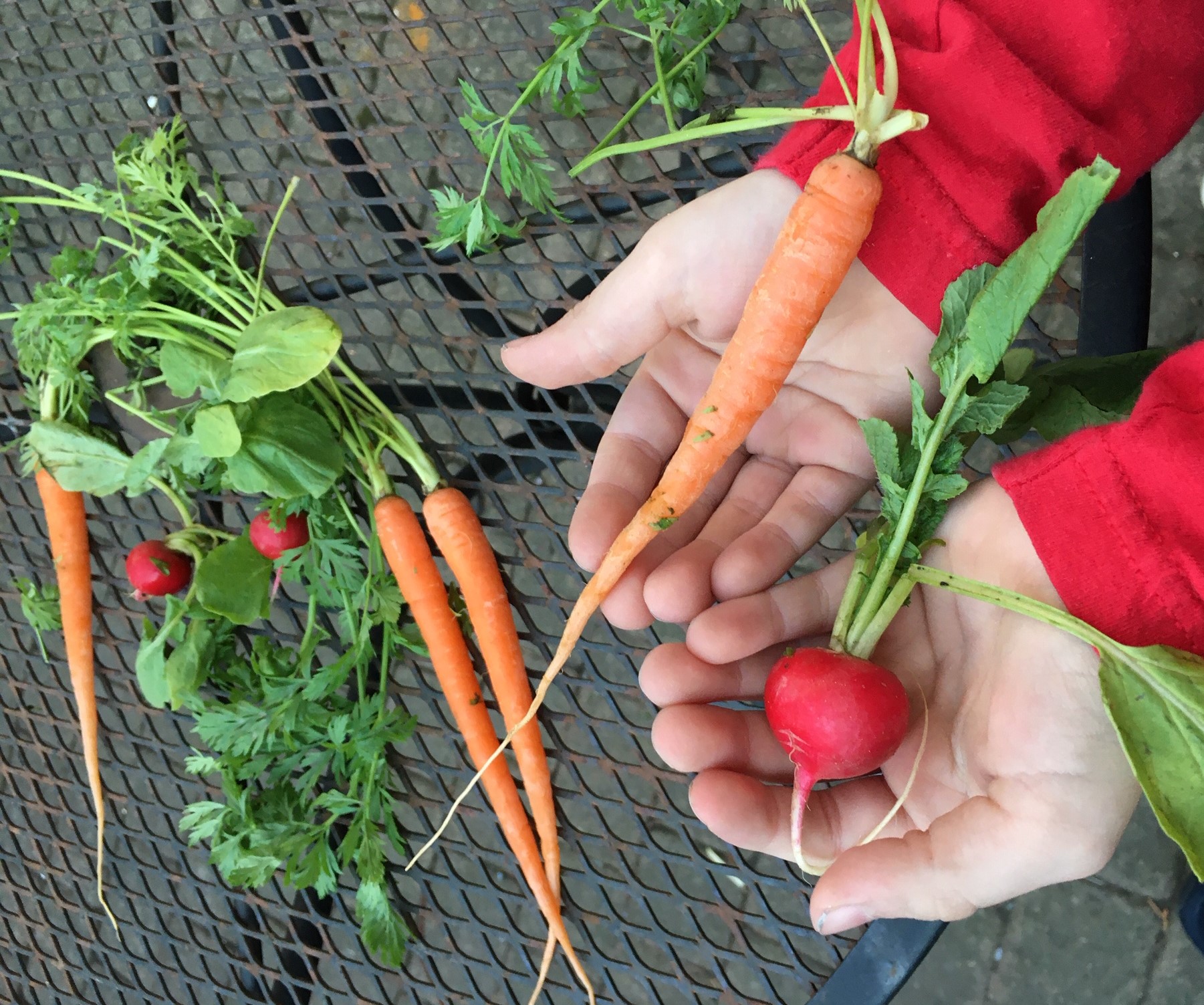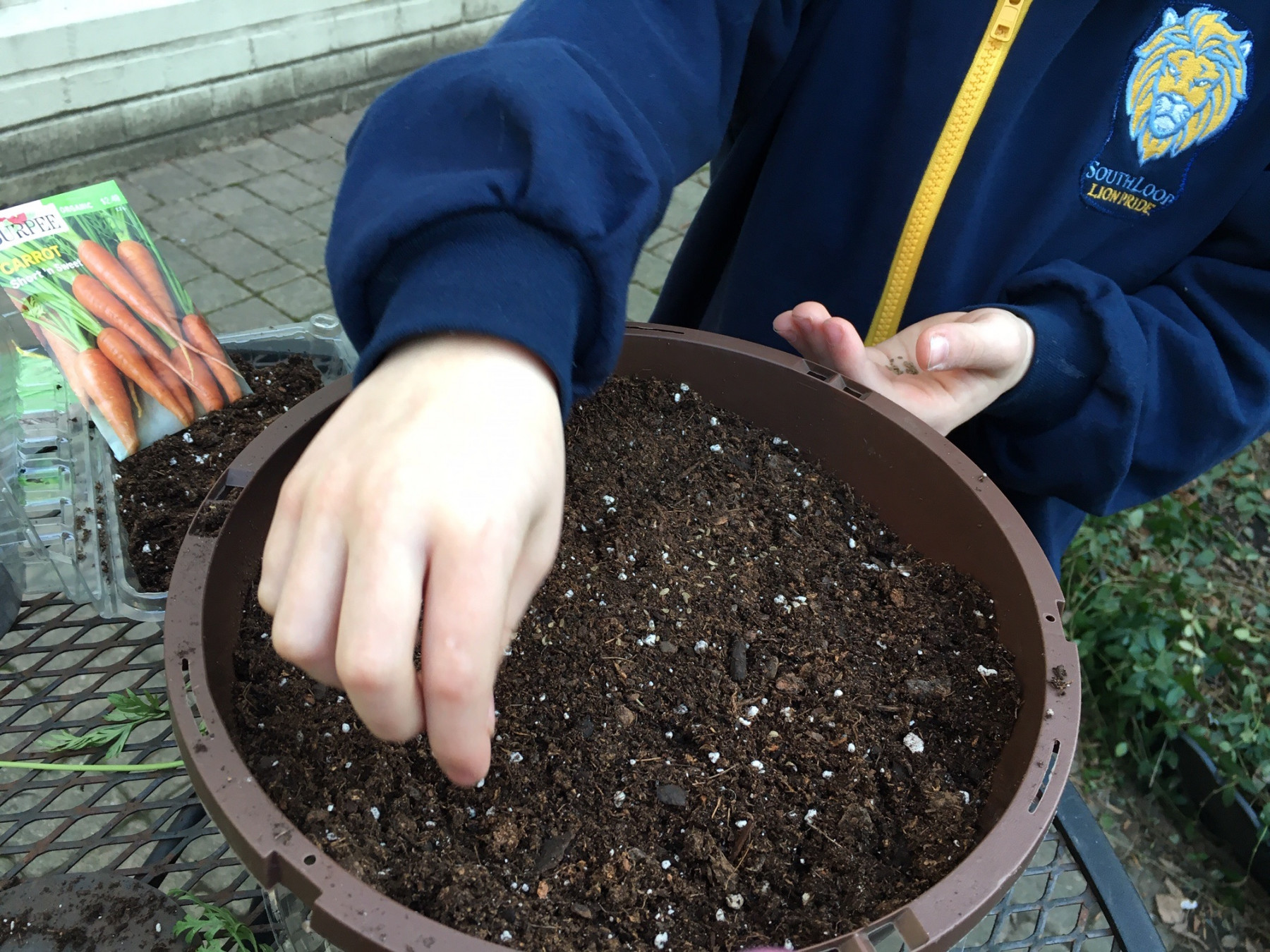
All over the world, antsy children are cooped up with anxious adults. It’s a scary world, all of a sudden. So grow something! Kids too!
Starting a little garden of their own can give children a focus, something to care for, and a goal to wait for, besides the day they can go out for pizza again. They’ll learn about how plants work and what they need (it’s stealth home schooling). They’ll have an experience to share with their friends and grandparents by social media or video chat.
There are ways for kids to garden in even the smallest spaces. KidsGardening offers a wealth of well-thought-out projects for various age groups, many of which use materials you probably have in your kitchen. You can also find good ideas at the website of the National Gardening Bureau.
Maybe the kids and the grandparents could both start the same project—sprouting a sweet potato or a carrot, maybe?–and compare progress by video chat.
Growing plants from seed is easy enough for anybody who’s out of preschool. Even if you have a yard, I usually recommend that a child’s first garden be a container with potting mix. It’s a lot easier than digging up and preparing the soil in a garden. You and your child can do it on the patio, the fire escape, the back steps, on a sunny windowsill, or, you’re lucky enough to have one, in a greenhouse.
Seeds may be available at the supermarket on your emergency shopping runs or online. If you’re a gardener or know a gardener, there are probably seeds left from last year.
It’s critical that the container have holes for drainage, because your child will be watering the plants daily. Therefore, if you’re growing indoors, you’ll need to put the container in a big saucer or bowl to catch the surplus water. Make sure it’s easy to empty after watering, so the planting container does not sit in a pool of water.
The best first plants for children are things they can eat. Not tomatoes—they take a long time and are too complicated. Instead, choose vegetables that will sprout and grow from seed right where the child plants them, and that don’t have to go through a flowering-and-fruiting process. Choose edible roots, such as radishes or carrots, or leaves, such as lettuce or spinach.
There are tradeoffs. Children want to see results soon, and the absolute fastest vegetables are radishes, which can grow from a seed to a bright-red edible root in as little as a month. However, in my experience, peppery radishes are a taste most children have not yet acquired.
They’re more likely to eat sweet carrots. But if you’re going to plant carrots, make sure your container is deep enough for them. Even if you plan to eat them when they’re young and tender, most carrots need a pot at least 12 inches deep (although there are shorter and chunkier varieties that will fit in a shallower pot, if you can get them).
If you plan to eat greens when the leaves are young and small, spinach and lettuce will grow in a shallow pot. You may think you don’t have a salad-eating kid, but it’s surprising what a child will eat if he grows it himself. While you watch the leaves get big enough to eat, you can try out salads together using store-bought lettuce.
All these vegetables will germinate in cool soil in spring, so you can go ahead and start this project in April. Follow the directions on the packet for how deep and far apart to sow the seeds (geometry!). (Although, really, in a pot you can place the seeds a little closer together.)
Start with moist potting mix. After you sow the seeds, cover the pot loosely with a clear plastic bag to hold in humidity (her first greenhouse!). Let her spritz the soil gently with clean water from a spray bottle to keep the seeds moist without washing them away.
It may take a week or 10 days for the seeds to germinate, so use that time to learn about plants and how they grow on the Internet, while checking daily for the first hint of green. Once the sprouts appear, remove the covering and water daily to keep the soil moist until it’s time to harvest.

Baby greens are ready to harvest when the leaves are about 3 to 4 inches long. A child can use safety scissors to snip off each leaf that’s large enough, letting the plant stay in place to grow more leaves. Your child’s crop of leaves won’t be enough to fill a salad bowl, but they can take pride of place atop a bowl of purchased greens.
For root crops, wait at least four weeks and then give a plant a gentle tug. If it resists, it’s got a good root. You may have to gently dig down next to a radish or carrot to see if the root is big enough to pull up and eat. If not, soon!
The key to gardening with kids is to let the child do it, as much as possible. It may not work the first time, but then it becomes a lesson is persistence, not failure. The grownup gardener is there for information and guidance, but when that first carrot appears on the family dinner table, the child should be able to brag that she grew it. And you grew a new gardener!


